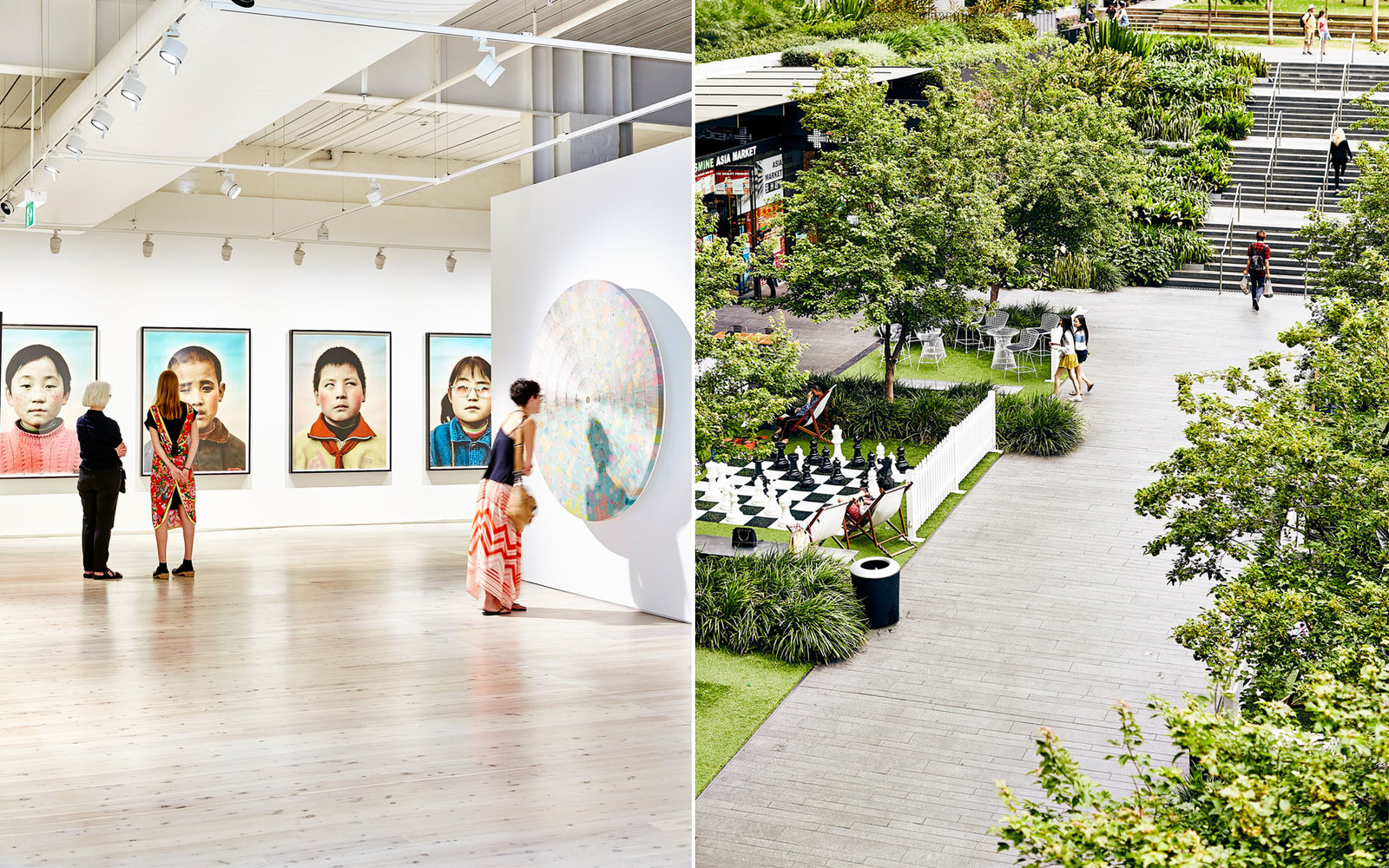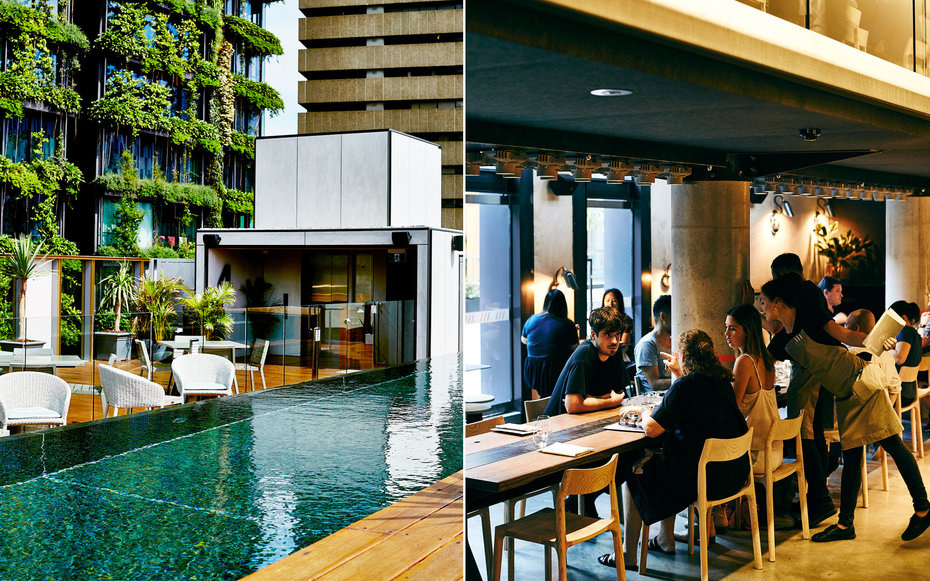
Sydney’s inner-city neighborhood of Chippendale gets a long-awaited upgrade.
To most Sydneysiders, the former workingclass enclave of Chippendale was a nondescript area easily overlooked in favor of the posh, beachy eastern suburbs. But just as its neighbors—Surry Hills, Redfern, and Darlinghurst—have been transformed by gentrification, so too has a creative scene come to Chippendale’s once rough-and-tumble streets.
At the vanguard of the revival is the Old Clare Hotel (doubles from $205), which occupies a 1915 brewery and a 1930s pub. The owners have taken great care to honor the buildings’ impressive bones while incorporating contemporary global influences: Midcentury Danish furniture, light fixtures from a Lebanese design studio, organic toiletries from New Zealand brand Triumph & Disaster, a sexy rooftop pool, and tongue-in-cheek Aussie touches including black tote bags in the closets printed with phrases like "random crap."
The heart of the hotel is its restored Art Deco pub, a cozy room with original tiled walls, a curved bar, frosted saloon doors, and dog-eared band posters from the likes of the White Stripes and Tori Amos. (There’s no longer live music at the bar, but the stereo plays homegrown acts.) The design quirks, such as a rotary phone that plays recordings of poetry when the receiver is lifted, haven’t alienated the “Chippo” residents. On a late weekday afternoon, two burly construction workers in bright reflective vests were at the bar having an after-work schooner of beer.

The Old Clare is also home to one of the city’s boldest and most talked-about new restaurants, Automata (tasting menus from $63), whose dining room has long tables and antique machinery collected from scrapyards. Chef Clayton Wells’s menu includes what many are calling “Sydney’s least Instagrammable dish”: a sublime and amorphous black mass of steamed hapuku over roe emulsion draped with wilted nori.
A few blocks away is the much-awarded Ester (entrées $13–$64), a Chippendale pioneer that serves wood-fired comfort food in a stylishly austere space. Try dishes like bone marrow with sambal or a “sanga” (Australian for sandwich) made with blood sausage. Nearby at LP’s Quality Meats (entrées $10–$32), the cavernous dining room has moody lighting and terrazzo floors. Sample chef Luke Powell’s grilled octopus with chorizo, or the lamb belly stuffed with merguez—straight from the Southern Pride Smoker he had shipped from Tennessee.
The tattooed brigades congregate at Sterling Apothecary, a barbershop offering old-fashioned straight-razor shaves (there’s also a beauty salon in the back). It will soon sell its own products, including an aftershave tonic blended with bay rum, cloves, and vanilla.
The art crowd has been flocking to the neighborhood, too. At White Rabbit gallery, owner Judith Neilson shows contemporary Chinese art by leading figures like Ai Weiwei. The Ambush art gallery, in the gleaming Central Park building, highlights work from local and international talent. And cementing the neighborhood’s cultural reputation is Frank Gehry’s first Australian creation, the paper-bag-esque Dr. Chau Chak Wing Building at the University of Technology Sydney, which opened last year. Visitors can check out the sculptural stainless-steel staircase in the lobby and the Level 2 café, with its acrylic cloud-shaped lighting. The building’s slightly off-kilter charm is a perfect emblem for this neighborhood on the verge.